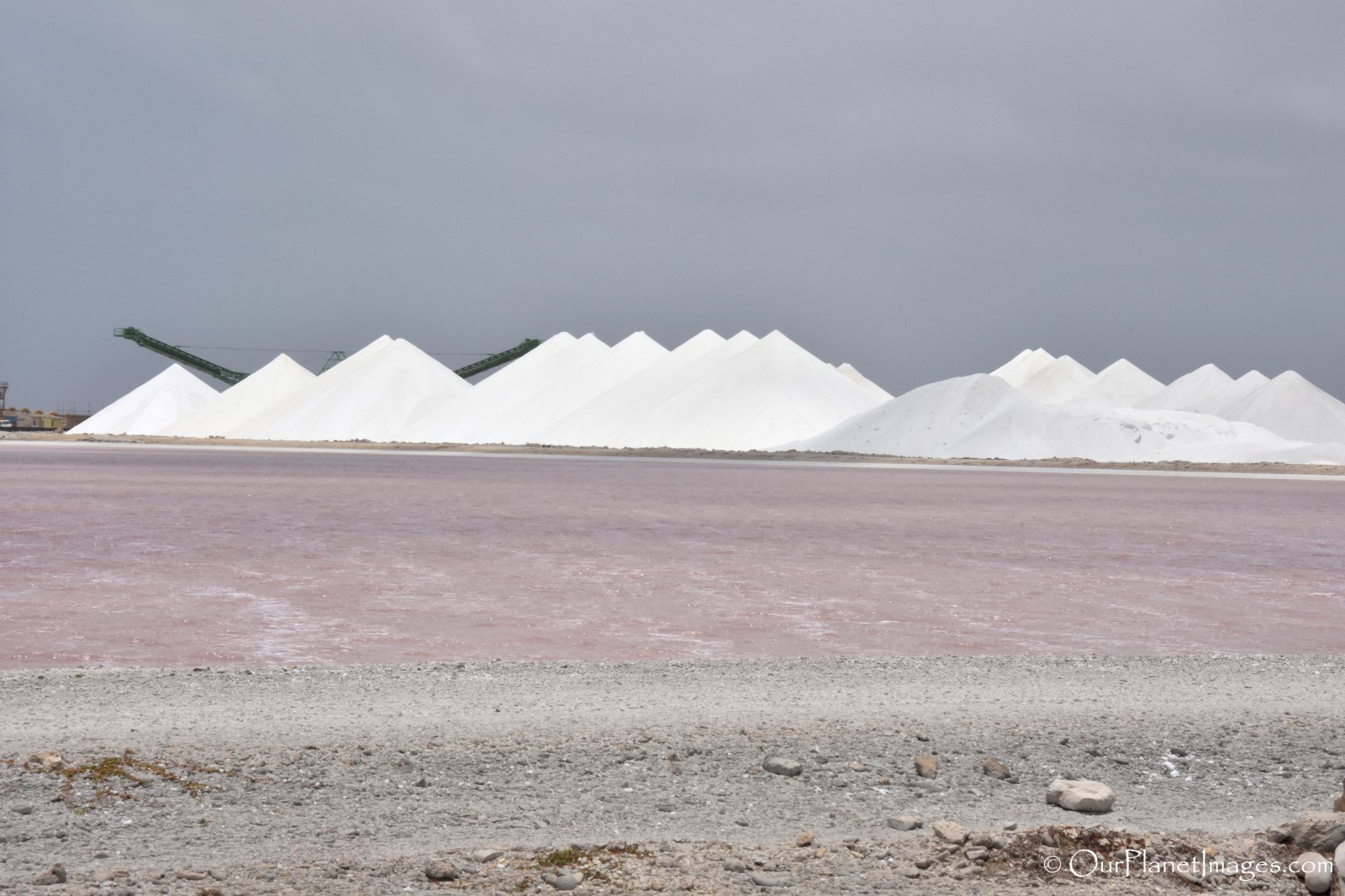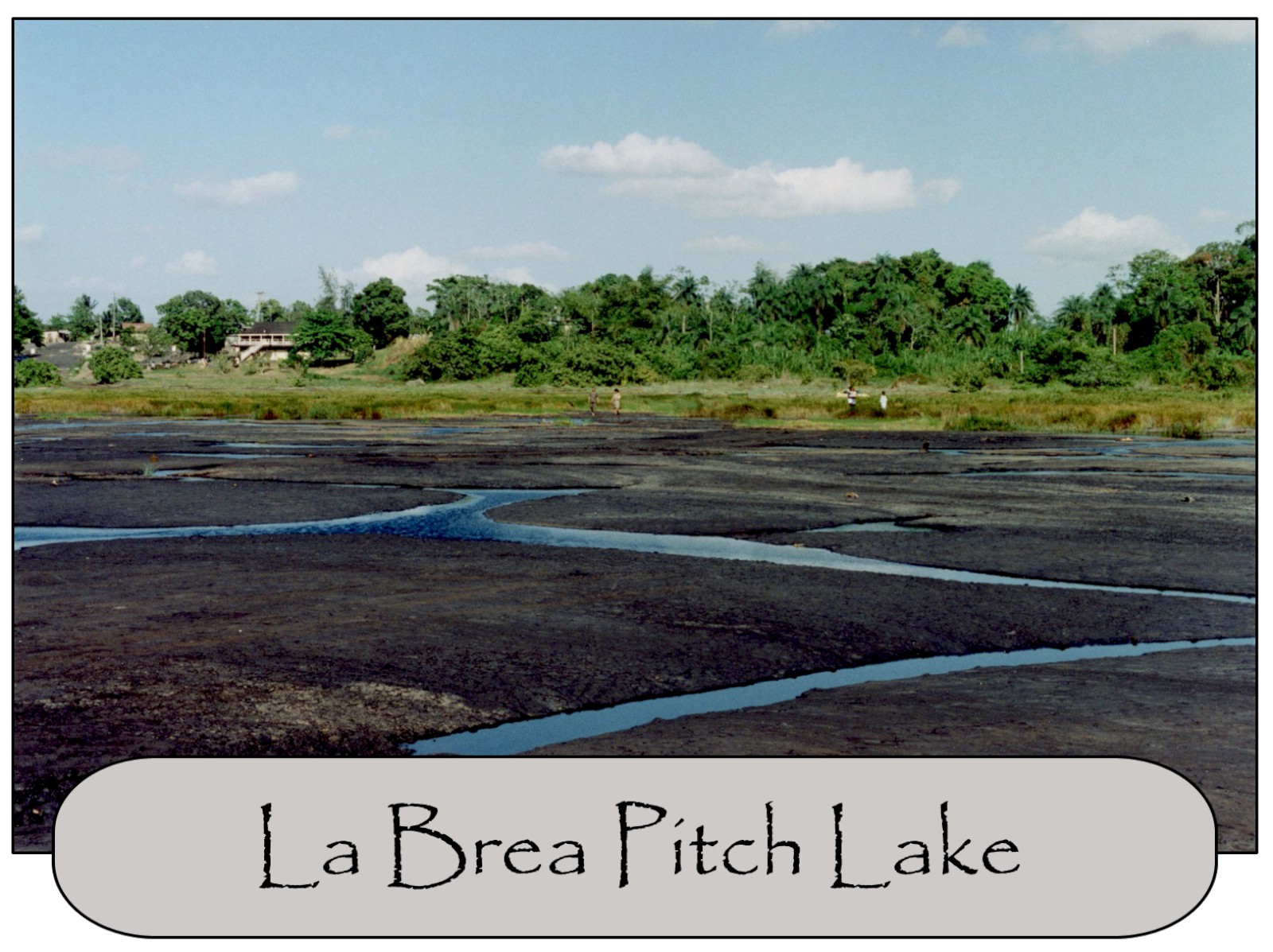The Bonaire Salt Flats are about 16 square miles of land and covers approximately 13 percent of the island.
The salt flats are a privately owned salt production facility and are located at the southern end of Bonaire. The entire site is only a few feet above sea level with a quarter of the area being natural wetlands and the remaining area is artificial wetlands. The salt production is primarily solar evaporation ponds for salt extraction.
Pink Salt Ponds
The salt flats are filled with ocean water naturally from the Caribbean due to wave action and tides. As the evaporation process takes place the water salinity level increases and the water color changes to pink due to pigments of a type of microorganism called “halophilic bacteria” which thrives in the highly saline water.
The salt water from the Caribbean contains around 3.5 percent salinity, when the brine reaches between 25 to 30 percent it is moved into crystallizer ponds. Salt in the water begins to crystallize and precipitate out of the brine solution at 37 percent salinity. Finally, an 8 to 10 inch layer of virtually pure salt remains at the bottom of each pond after the water has completely evaporated. The entire process takes 10 to 12 months depending on the weather conditions.

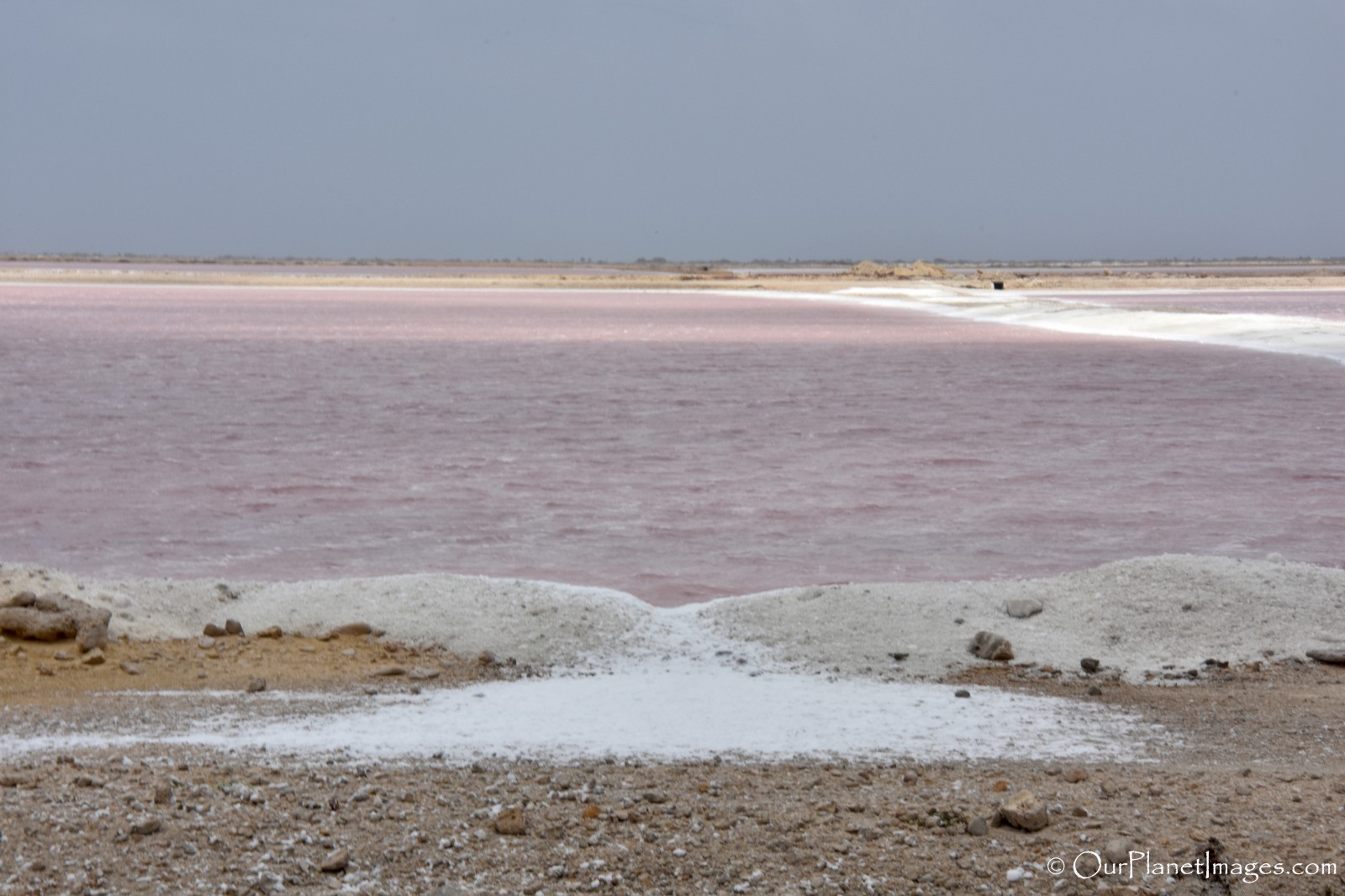
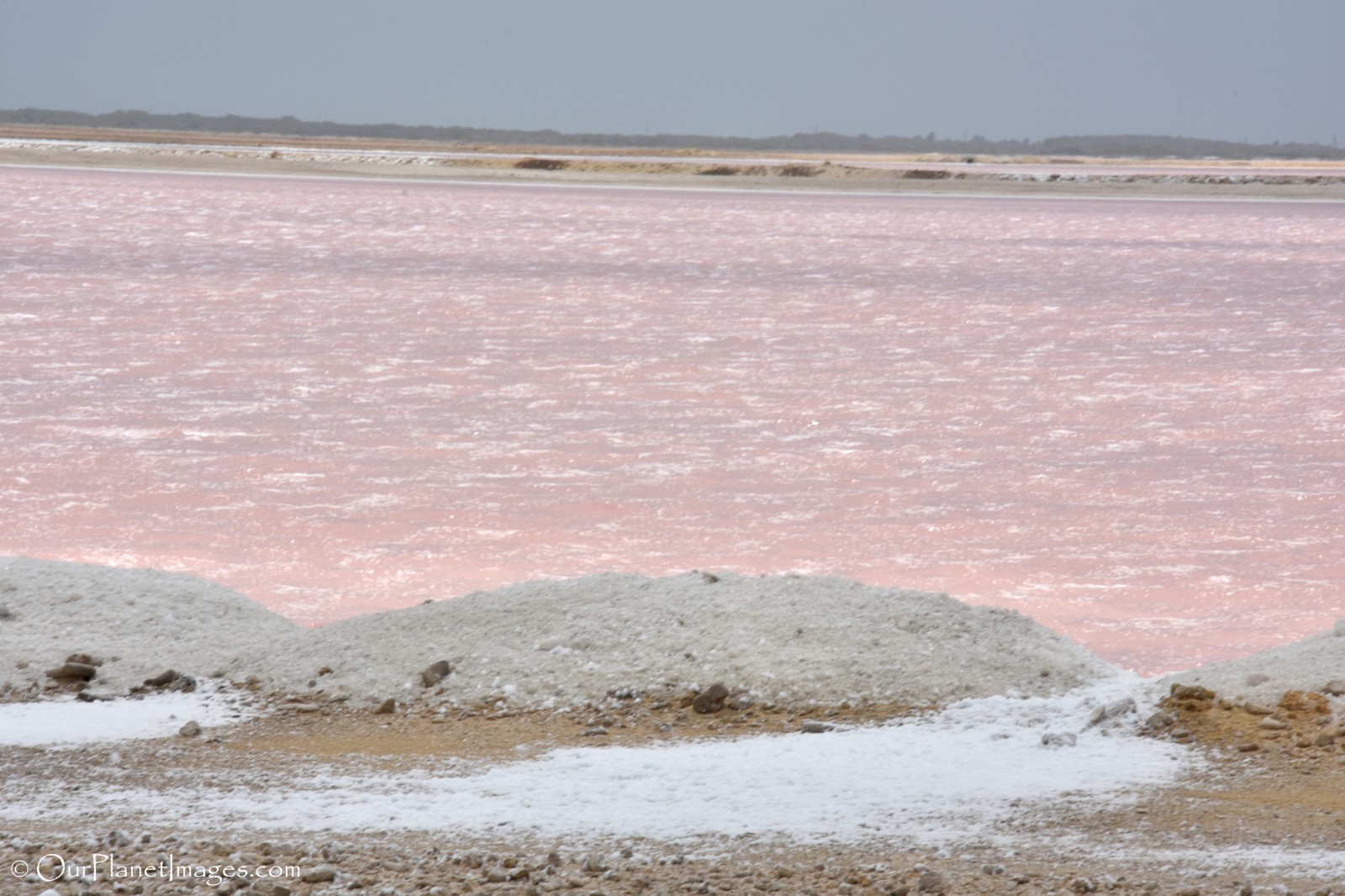




Salt Pyramids
One of the most notable features in Bonaire are the distinctive line of white salt pyramids at the southeastern end of the island. Each pyramid is roughly 50 feet high and contains approximately 10,000 metric tons of 99.6% pure salt. The facility produces between 300,000 and 500,000 metric tons of salt annually that is exported all over the world.
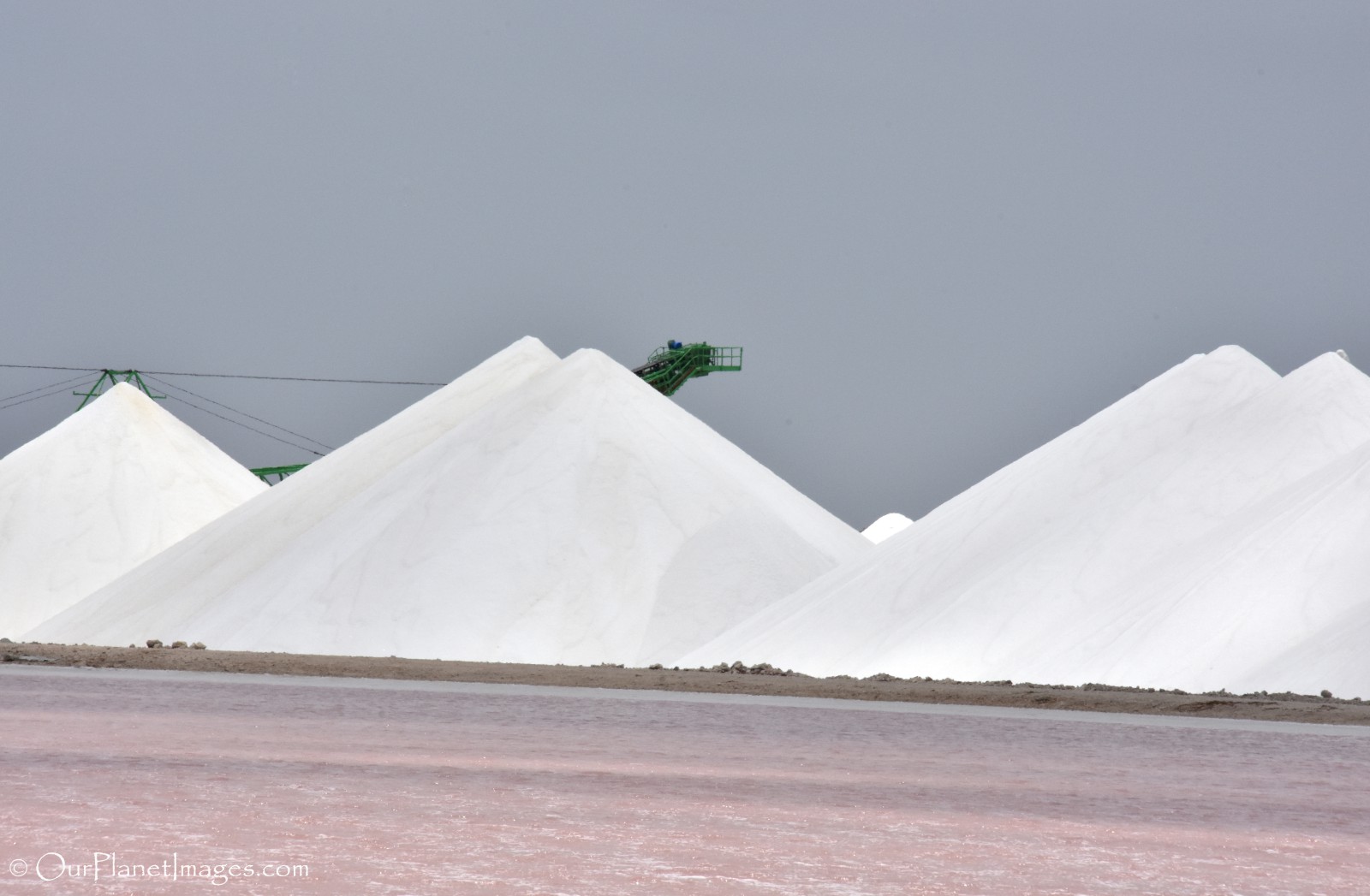
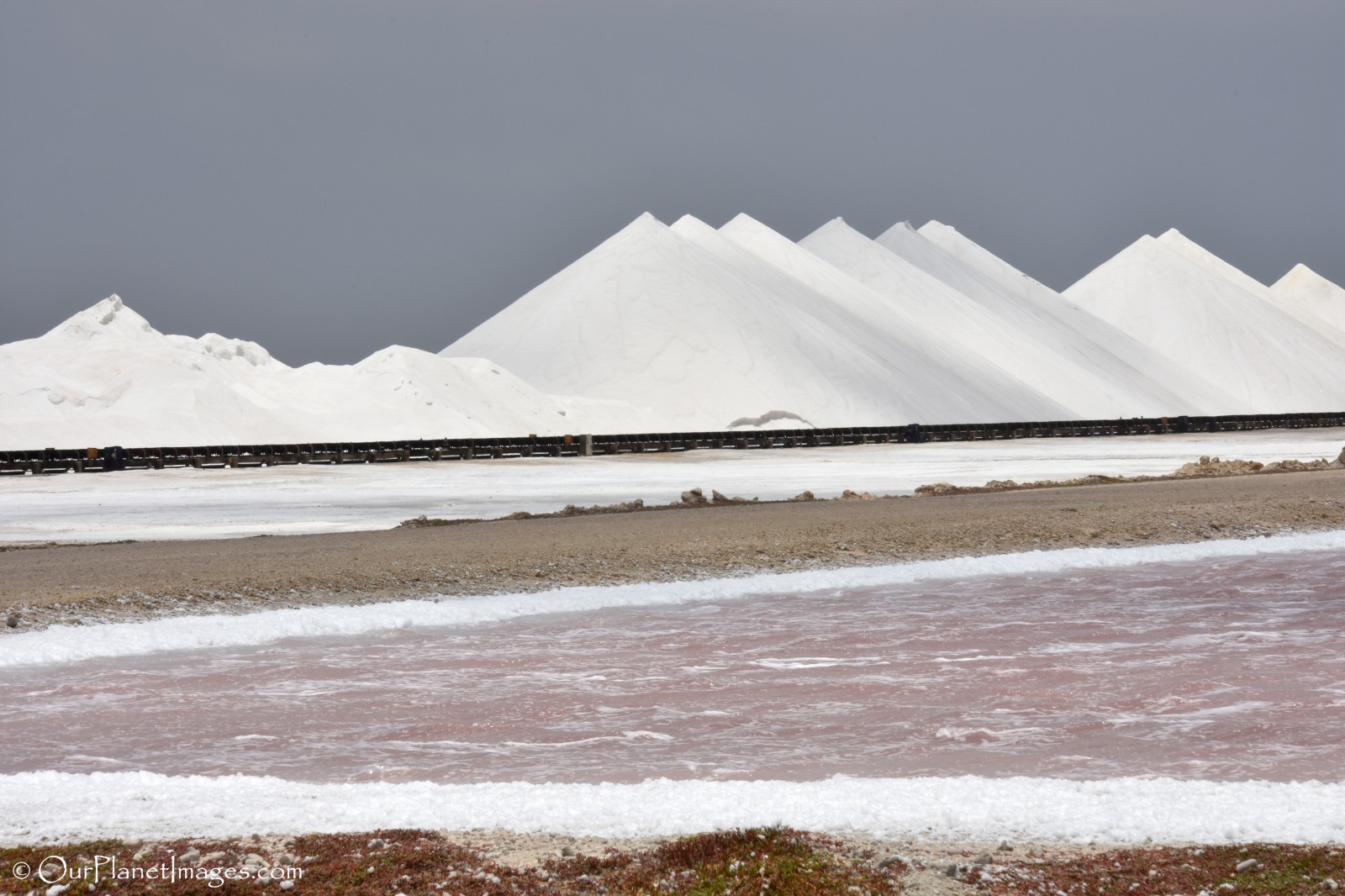
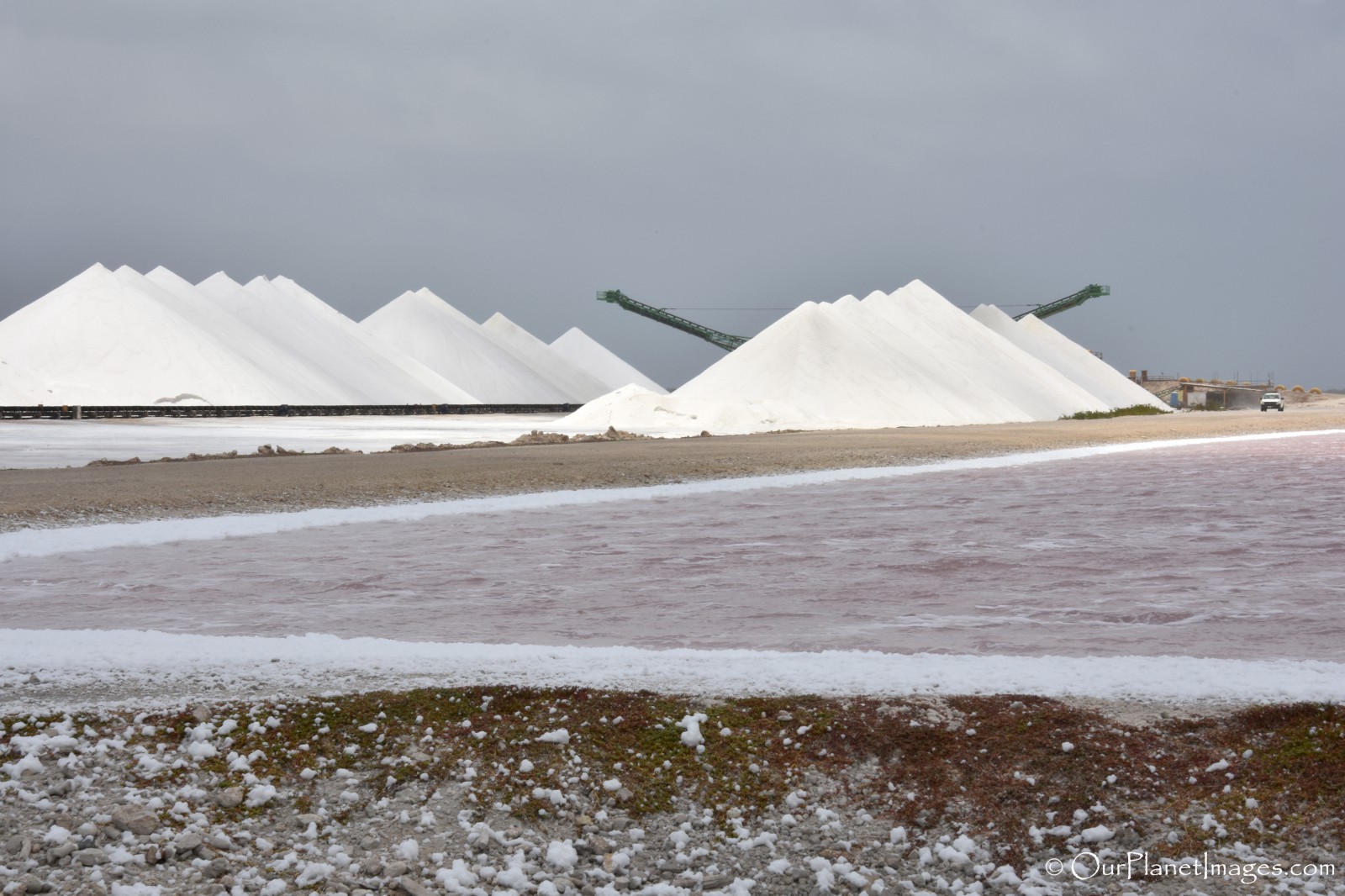
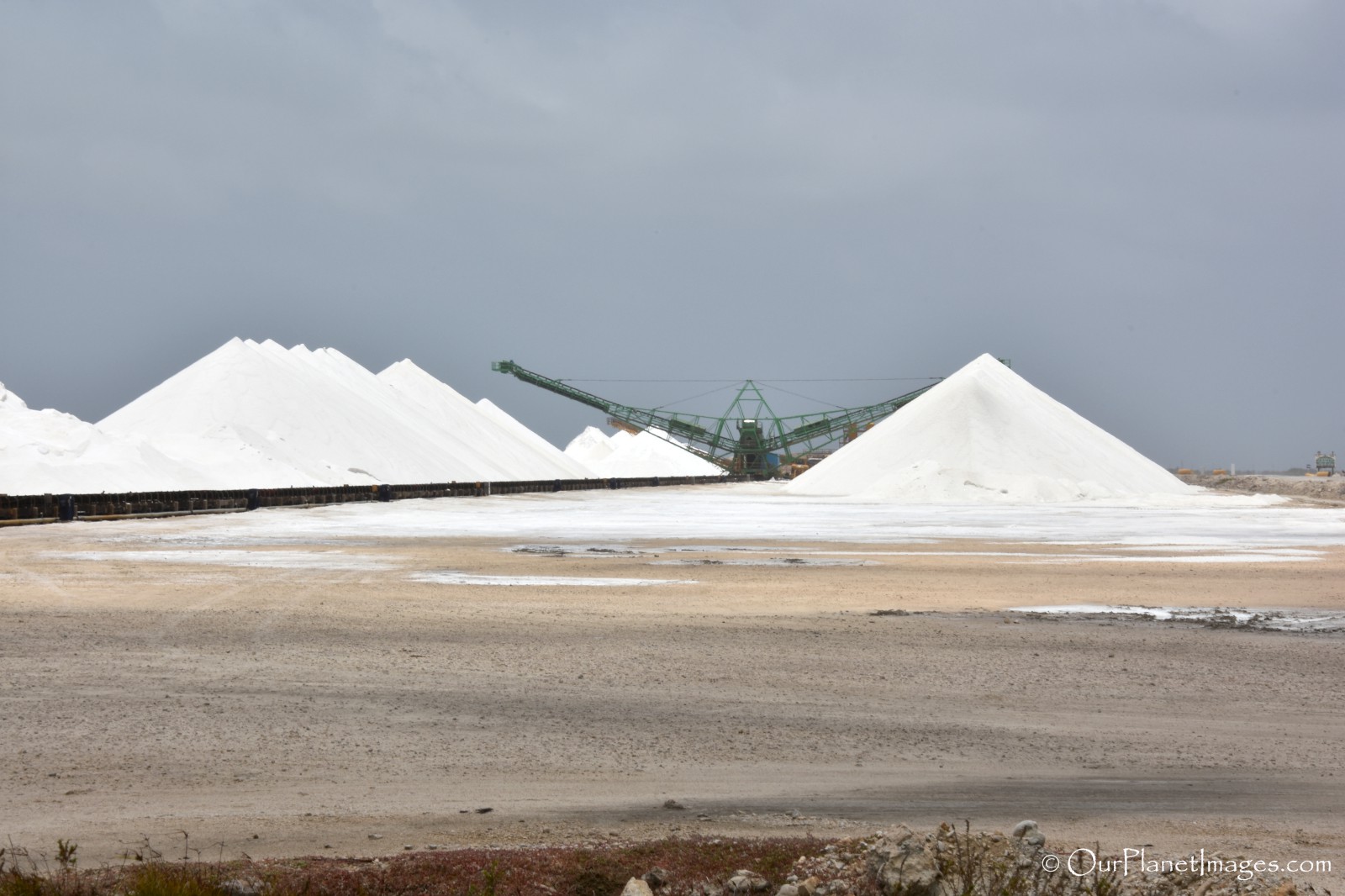
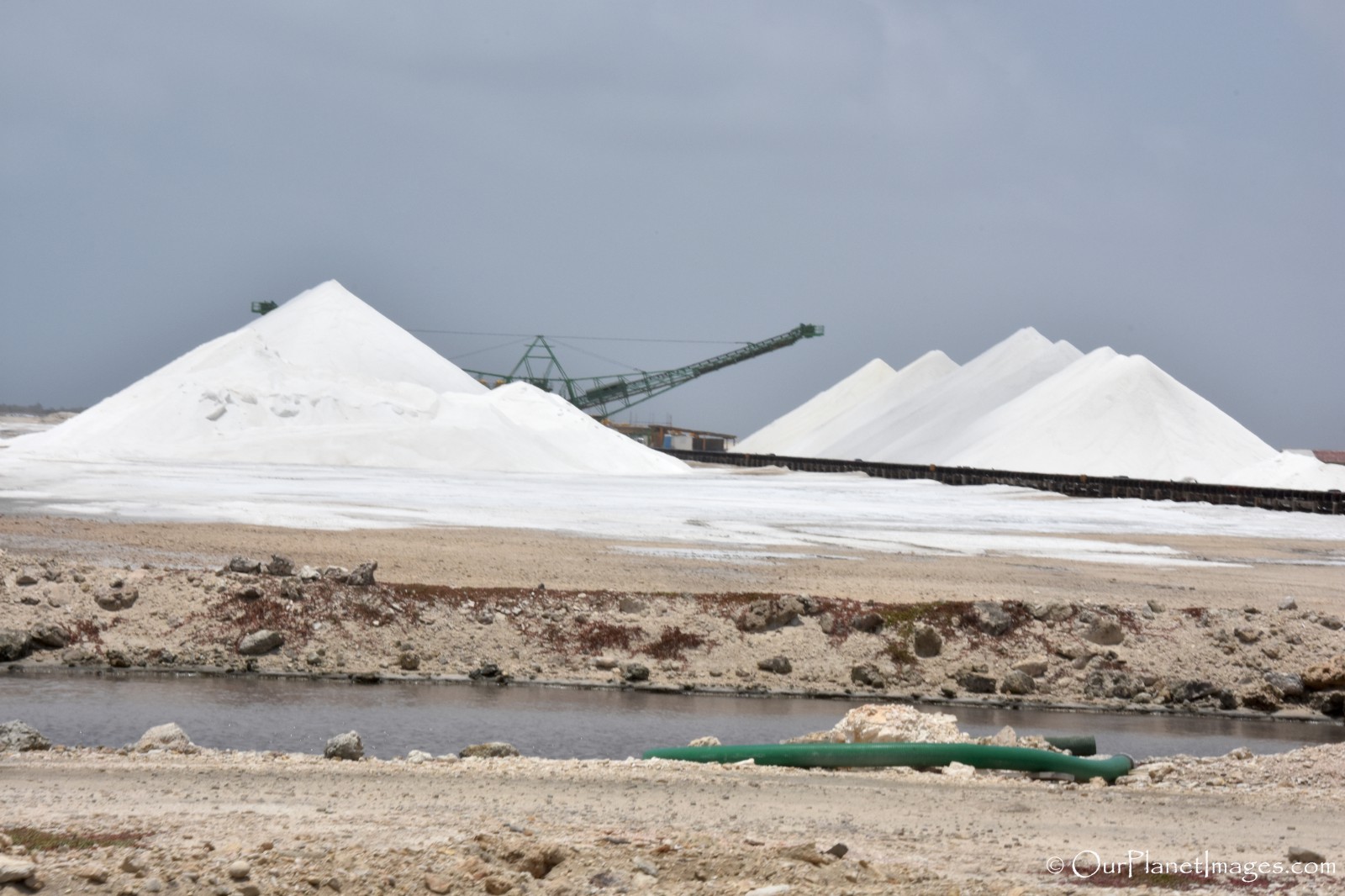
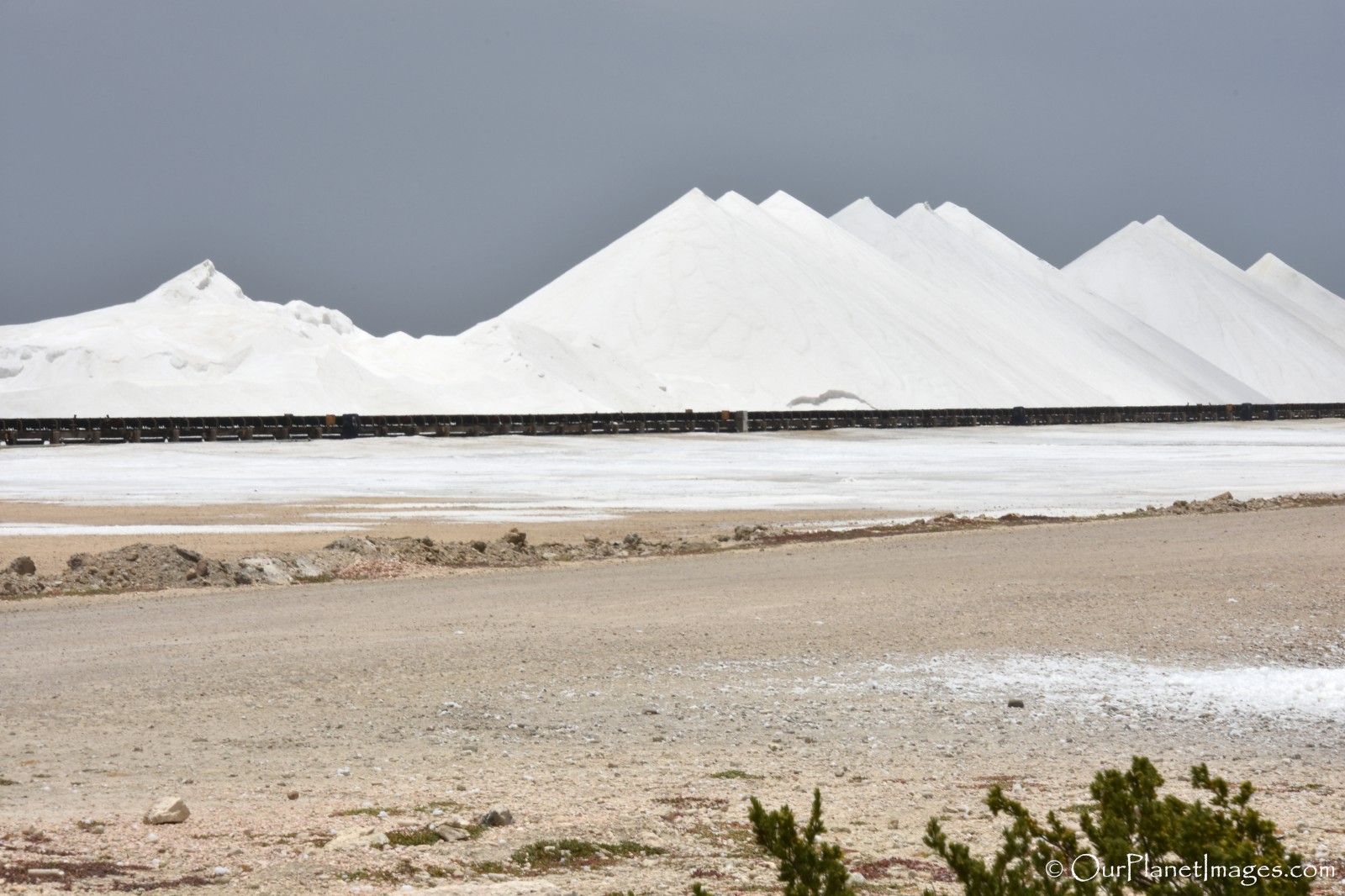

Bonaire salt pier
The salt pier is the primary point for transporting Bonaire salt to global markets. Rail cars filled with salt are brought from the nearby salt pyramids and loaded into large ships docked at the salt pier.
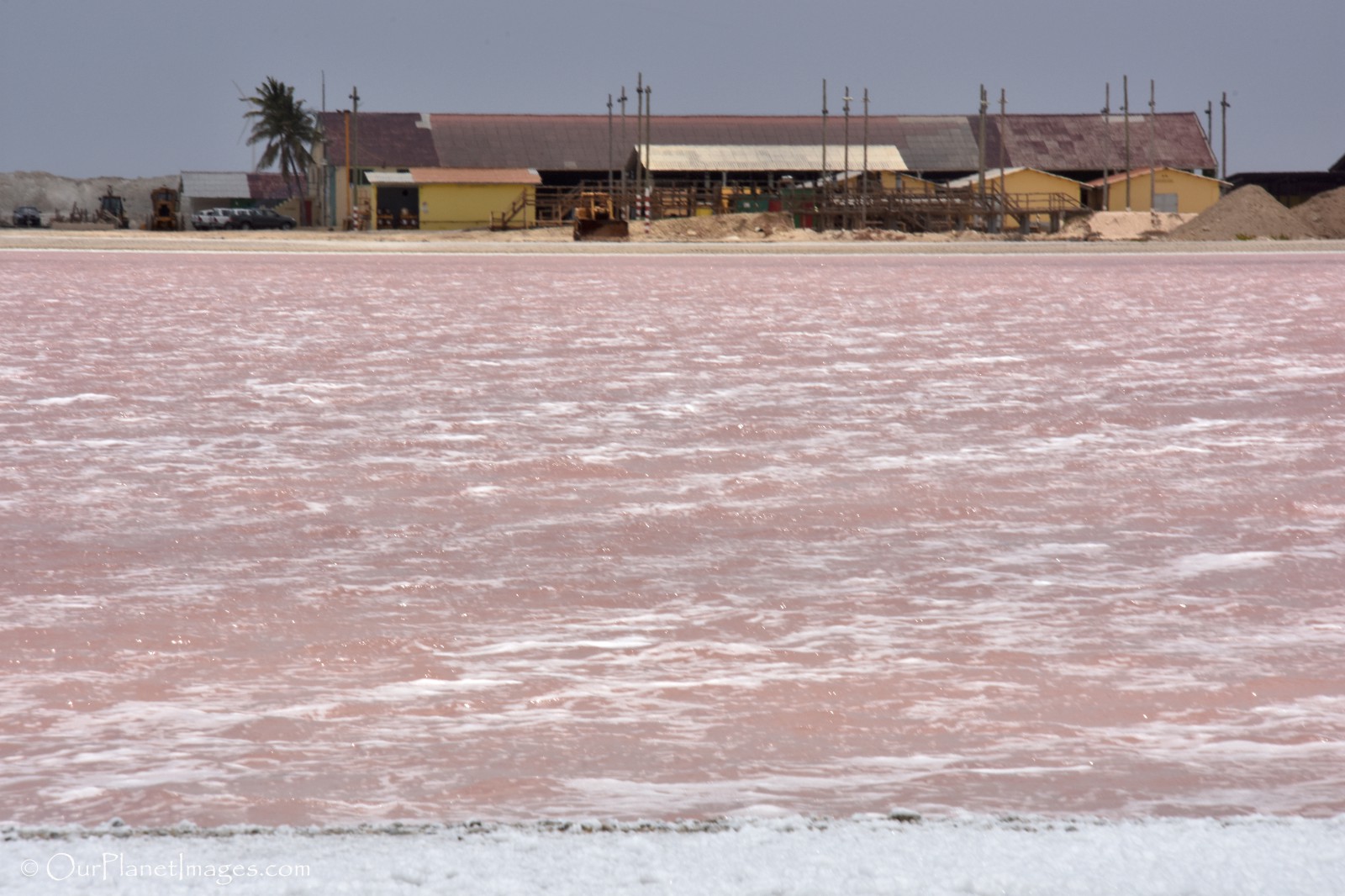
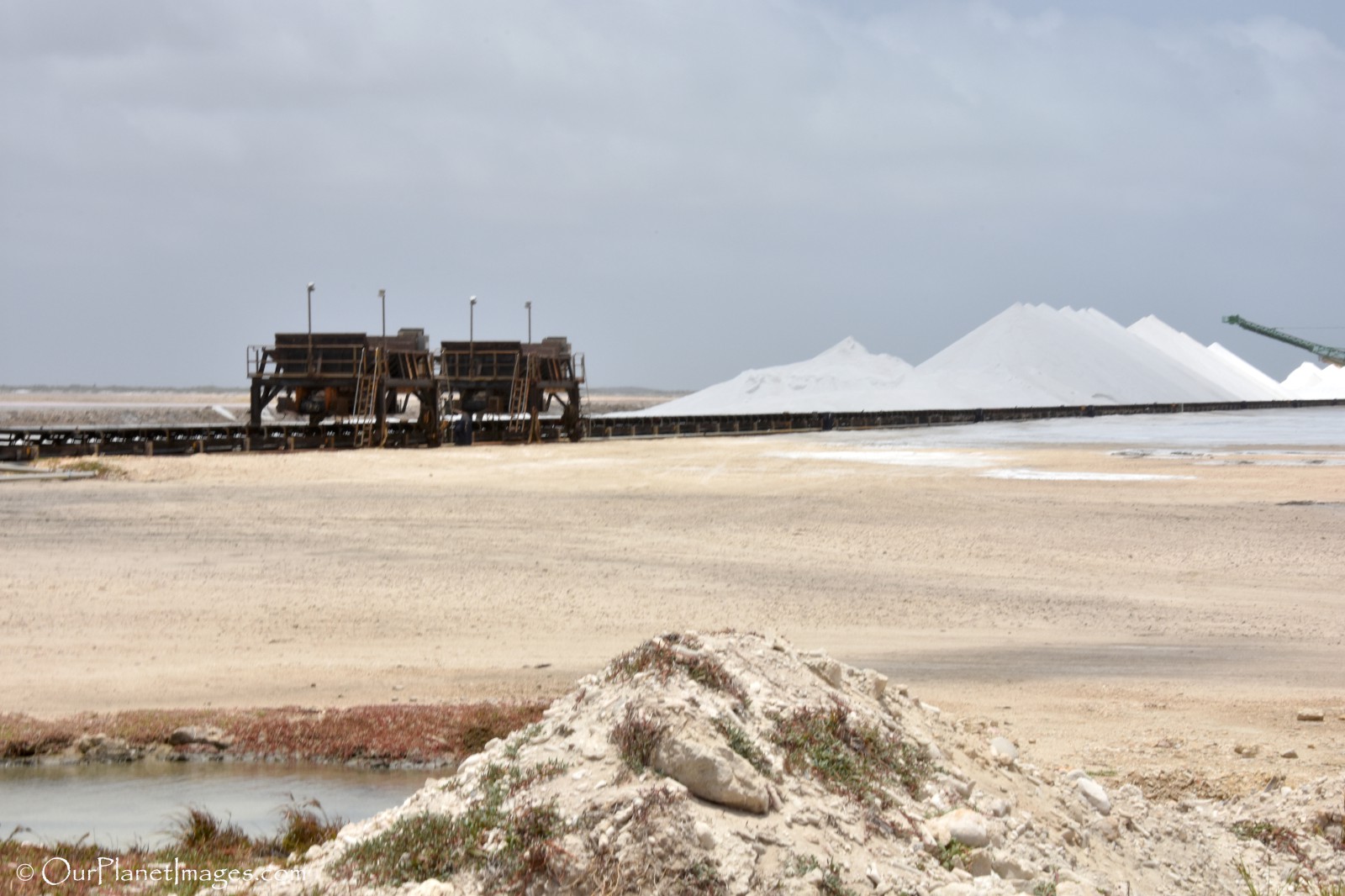
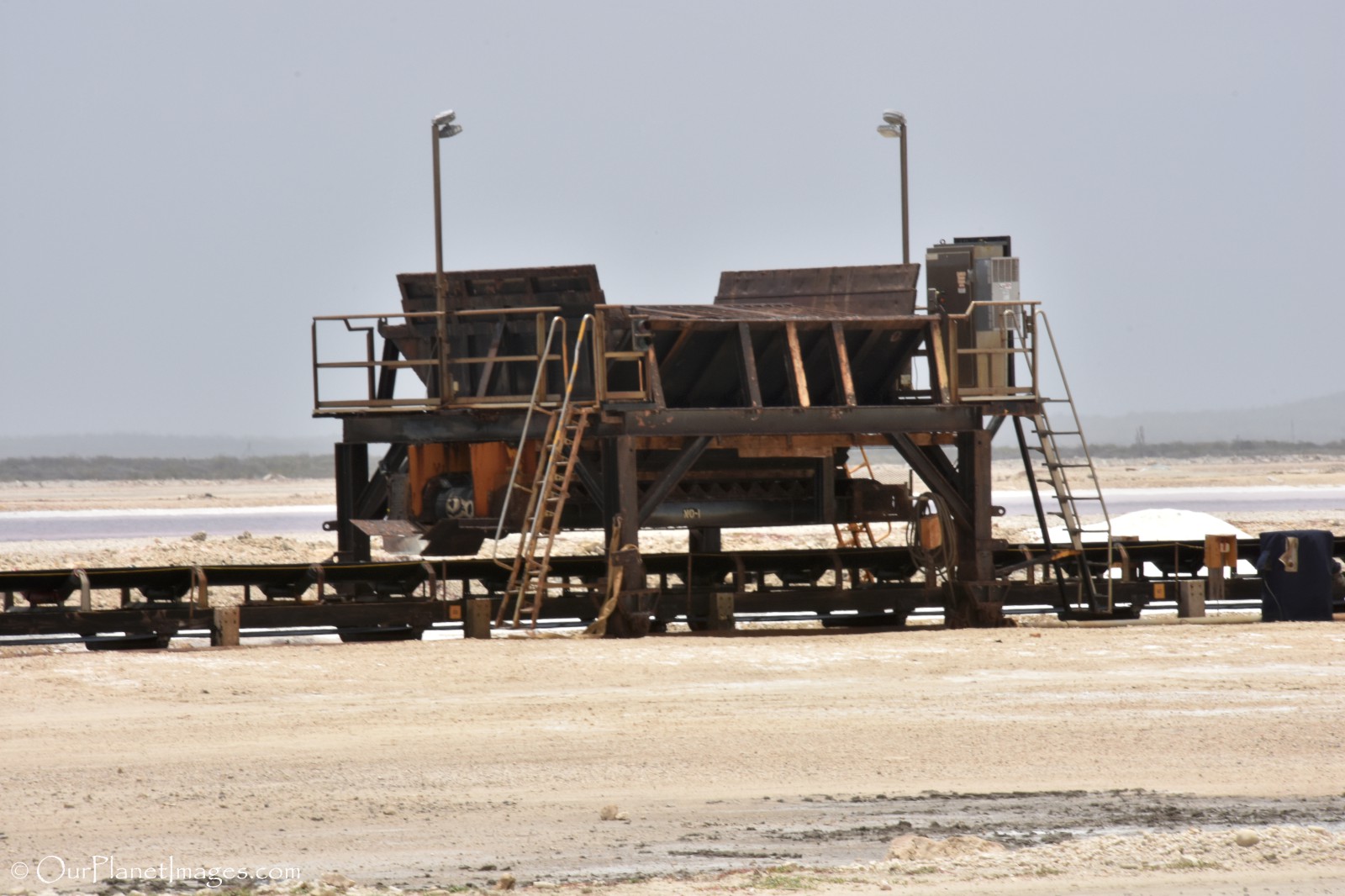

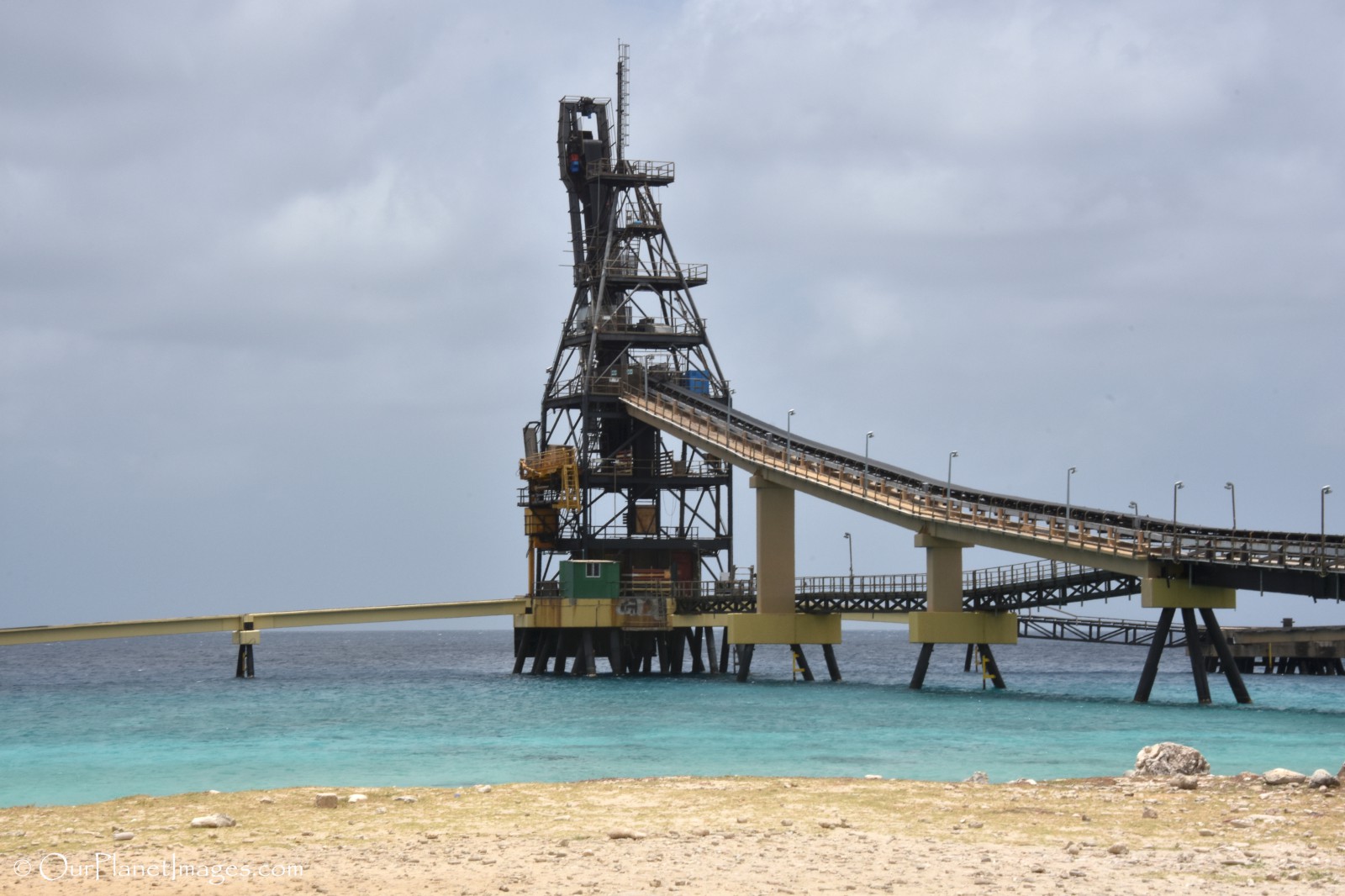
Home to wildlife
More than 20,000 shorebirds of 17 different species visit the large wetland complex every year. Additionally, the salt flats supports one of the most important American Flamingo nesting colonies in the Caribbean.
Bonaire Flamingo Sanctuary
The Bonaire Flamingo Sanctuary is located within the salt flats and is a protected area where the birds breed, nest and raise their chicks safely. The flamingos are attracted to the salt flats because the high salinity promotes growth of flamingos’ main food which is brine shrimp.
During the breeding season, both male and female flamingos work together to construct a nest that is about 10 to 12 inches high. Each nest contains a single egg that takes approximately 28 to 32 days to hatch. Flamingo chicks are born with white feathers but gradually turn pink as they grow due to their diet of brine shrimp. Brine shrimp thrive on the algae and bacteria and the flamingoes thrive on the brine shrimp. The pink pigment in the bacteria is concentrated in the brine shrimp and then absorbed by the flamingoes turning their feathers into a bright pink color.

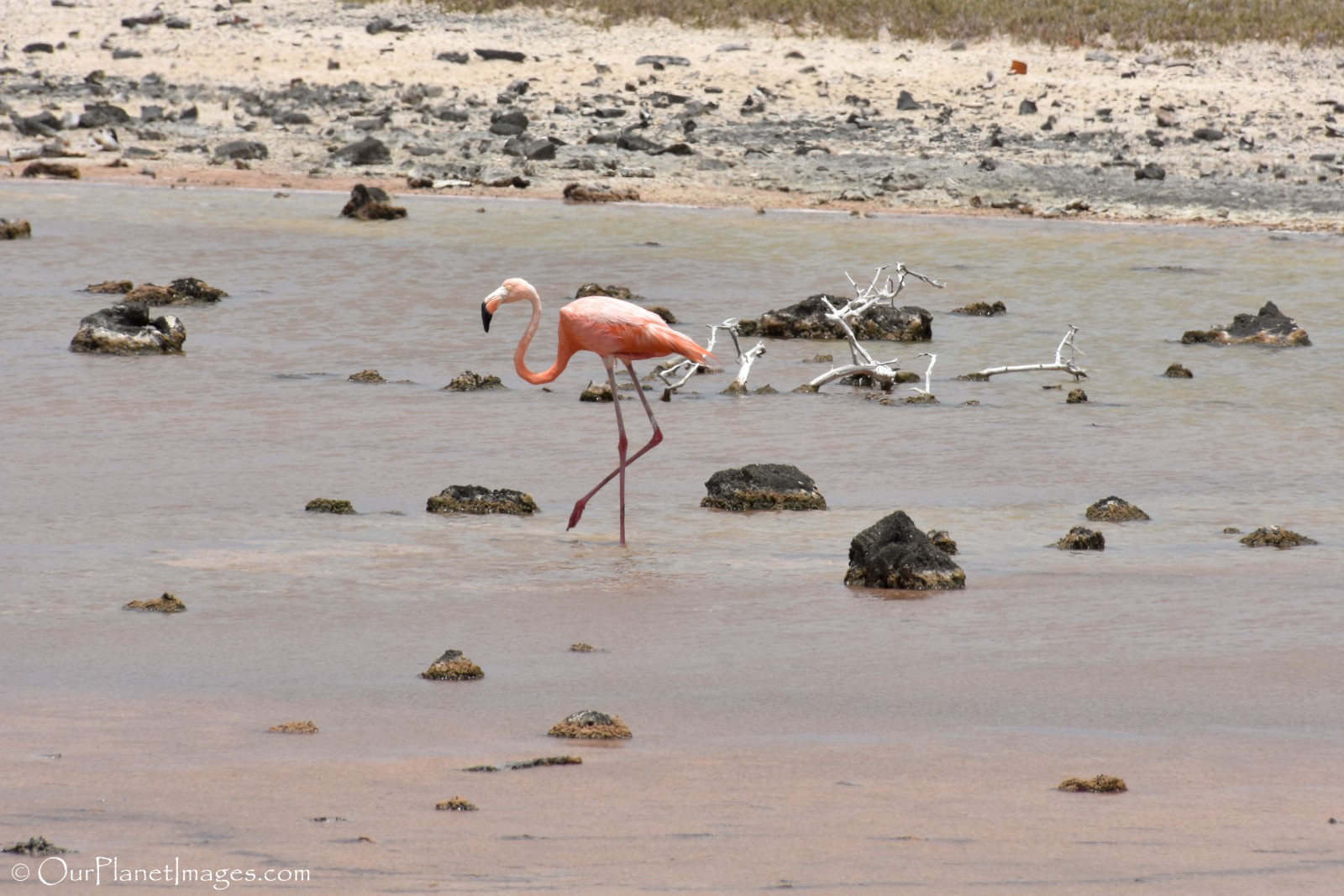


The Dust on My Shoes
Nature never ceases to amaze me! The water of the Caribbean is a beautiful turquoise blue but somehow it is turned into a bright pink from an invisible bacteria that thrives in high salinity water that is unsuitable for most sea life. The other oddity is that the ocean front road separates the Caribbean from the salt ponds creating an unusual sight where the water on one side of the road is bright blue and the water on the other side of the road is bright pink.
Salt flats are not a natural area for creating a thriving industry but they have taken something that many people see as a wasteland and turned it into a productive business. Sometimes our perceived problems can actually be a blessing.
I have always heard that “we are what we eat”, this is literally true if you are a flamingo. They change color from white to pink from what they eat.
The Bonaire Salt flats are a perfect example of the saying, “when life give you lemons, make lemonade.”
